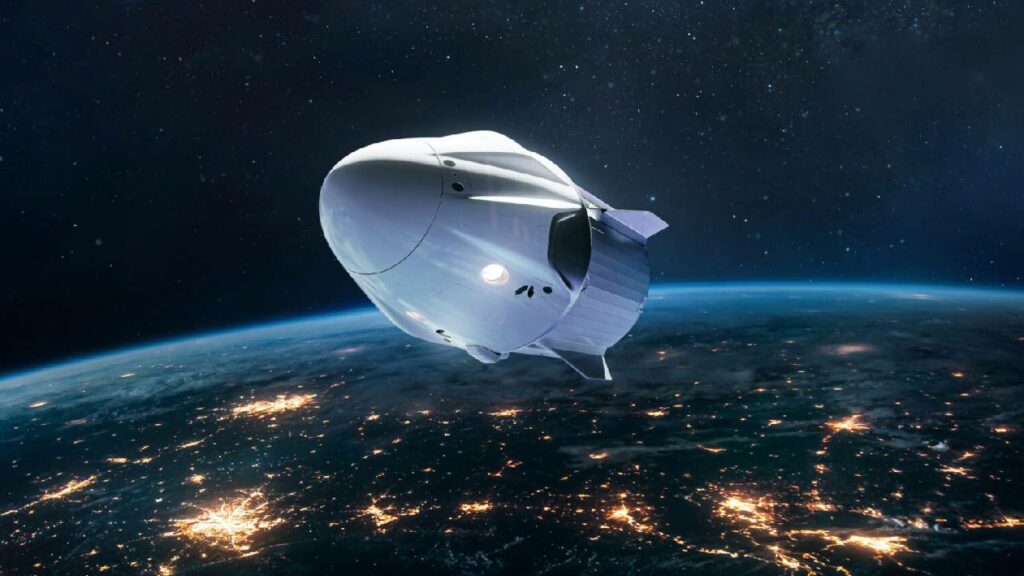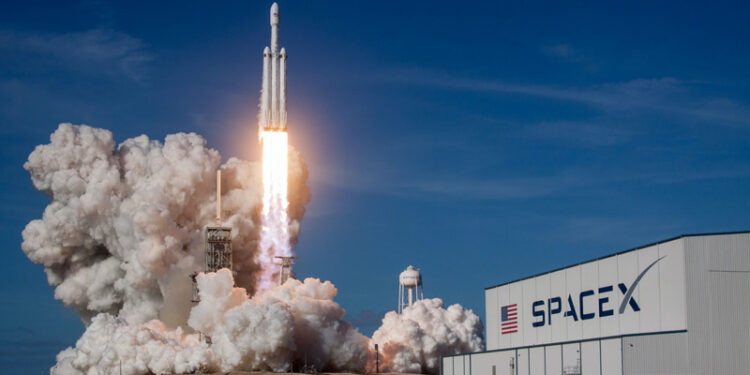A new frontier is opening up—space is no longer exclusive to elite astronauts or national space agencies. The era of commercial space tourism has officially begun, enabling ordinary individuals to touch the cosmos. Over the past decade, breakthroughs in rocket reuse, private space ventures, and evolving technologies have blurred the line between science fiction and reality. Today, multiple companies are offering both suborbital hops and orbital vacations, opening the heavens for those with the vision—and a few million dollars.
In this expansive article, we’ll explore the evolution of commercial space tourism, technological advances, passenger experiences, economic opportunities, ethical questions, and the long-term vision for space travel. It’s tailored for SEO performance and AdSense monetization, with comprehensive detail, engaging subheads, and clear, structured lists.
A Brief History of Space Tourism
A. Early Private Visitors
-
2001: Dennis Tito became the first private citizen to pay for a ride to the International Space Station (ISS) aboard a Russian Soyuz rocket.
-
Over the next decade, several wealthy individuals—Mark Shuttleworth, Gregory Olsen, Anousheh Ansari, Charles Simonyi, Richard Garriott, Guy Laliberté—followed, generally orbiting Earth for about a week and staying on the ISS.
B. Emergence of Private Launch Companies
Beginning in the 2000s, firms like SpaceX, Blue Origin, and Virgin Galactic started building space-capable vehicles with a focus on commercial missions—a stark contrast to state-run programs.
-
Virgin Galactic (founded 2004): Developed a spaceplane for suborbital flights.
-
Blue Origin (established 2000) and SpaceX (founded 2002): Developed rockets that are partially reusable, reducing launch costs and increasing frequency.
C. Functional Shift in the 2020s
-
2021: Blue Origin’s New Shepard flew its first crewed mission with Jeff Bezos onboard.
-
Virgin Galactic launched its Unity 22 mission with company founder Richard Branson.
-
SpaceX executed Inspiration4, sending civilians to Earth orbit for heritage purposes.
-
These missions signaled the shift from novelty to viable commercial operations, with tickets now marketed to non-professional participants.
What Makes Space Tourism Possible?

To understand why the commercial era has begun, we need to look at several key innovations.
A. Rocket Reusability
One groundbreaking innovation is reusable rockets:
-
SpaceX’s Falcon 9 and Falcon Heavy features boosters that land back vertically for reuse.
-
Blue Origin’s New Shepard returns its booster and capsule for refurbishment.
-
Virgin Galactic’s SpaceShipTwo is launched from a mothership, then glides back for reuse.
Reusability dramatically lowers costs—launches no longer need fully built vehicles each time, allowing easier frequency.
B. Advances in Propulsion, Materials, and Safety
Modern spaceflight benefits from:
-
High-performance fuels for more efficient engines.
-
Lightweight composite materials to reduce weight and increase performance.
-
Advanced avionics, sensors, and avionics software for fail-safe operation.
C. Regulatory and Commercial Frameworks
Space tourism requires evolving regulation:
-
Governments have crafted licensing regimes for private flights.
-
Liability insurance, participant waivers, and operator regulations are evolving.
-
International treaties and private-public cooperation are adapting to safety and legal norms.
Types of Space Tourism Experiences
Space tourism isn’t one-size-fits-all. There are several tiers of experience:
A. Suborbital Flights
-
Flights last a few minutes of weightlessness, peaking above 100 km (Kármán line).
-
Passengers board a rocket or spaceplane, experience ~4–5 minutes of low gravity, then return to Earth.
-
Price range: approximately $250,000 to $500,000 per seat.
Notable operators:
-
Virgin Galactic (SpaceShipTwo)
-
Blue Origin (New Shepard)
B. Orbital Missions
-
Passengers enter low Earth orbit (LEO) and potentially dock with modules like the ISS.
-
Missions last from 2 to 10 days or longer.
-
Costs range from $50 million to $100 million per seat, though future innovations may lower price.
Operators include SXC, Axiom Space, Space Adventures and SpaceX (Dragon Crew).
C. Extended Planetary Voyages
-
This remains speculative and expensive—places like private space stations or future lunar missions.
-
Visionaries like Axiom Space are planning orbital hotels by the late 2020s or early 2030s.
What Will Commercial Passengers Experience?

From booking to landing, the experience is immersive:
A. Pre-Flight
-
Medical screening ensures fitness for high-G forces and vacuum exposure.
-
Training includes simulated launches, zero-G flights, and emergency drills.
-
This takes days to weeks, depending on program tiers.
B. Launch Phase
-
Suborbital: Rapid acceleration (up to ~3 Gs) rockets to space altitude.
-
Orbital: Multi-stage launch achieving ~28,000 km/h to sustain orbit.
C. Weightlessness
-
Up to 6 minutes of microgravity for suborbital travelers.
-
Orbital passengers enjoy days of living in near-weightless environments—floating around, drinking from pouches, preparing meals, even conducting experiments.
D. Views and Photography
-
Spectacular views of curves of Earth, thin atmosphere, shots of sunrise, land, ocean, weather.
-
High-end cameras and open windows (Crew Dragon) enhance visual storytelling.
E. Reentry and Touchdown
-
Spaceplanes glide back; capsules reenter, experience ~4–6 Gs, then parachute to landing sites.
-
Smooth touchdown marks mission completion.
Who Is The Space Tourist?
The initial wave included billionaires—Bezos, Branson, Markus Persson, William Shatner. Now the field is broadening:
A. Adventure Seekers
-
Wealthy individuals keen on unique experiences.
-
Those passionate about aerospace or exploration.
B. Researchers and Artists
-
Artists, filmmakers, scientists can conduct microgravity experiments or creative projects in orbit.
C. Corporate Incentives
-
Companies sponsoring employees or clients as extraordinary incentives or marketing strategies.
D. Future Enthusiasts
-
Thanks to decreasing costs, expanding demographics may include affluent travelers and professionals by the 2030s.
Economic & Industrial Ripple Effects
Commercial space tourism is more than transports; it’s an entire ecosystem.
A. Infrastructure Boom
-
Launch sites, training centers, mission control hubs, and recovery services will proliferate globally.
B. Support Services
-
Hospitality services, medical screening, G-experience simulators, and space-training gear will become mainstream.
C. Spaceports
-
Regions with favorable environment and regulation—like New Mexico (USA), Cornwall (UK), and Dubai (UAE)—are emerging as space tourism hubs.
D. Supporting Industries
-
Manufacturing, robotics, propulsion systems, avionics, VR training services will surge.
Ethical, Environmental & Safety Considerations
This upheaval comes with concerns:
A. Environmental Impact
-
Rocket launches produce emissions (CO₂, soot, water vapor).
-
Greater launch frequency increases atmospheric impact.
-
Companies are researching green fuels and reusable designs to reduce footprints.
B. Safety Standards
-
Ensuring passenger well-being in unforgiving environments.
-
Strict procedures, emergency systems, and rescue capabilities are under continuous improvement.
C. Equity & Accessibility
-
Initial flights may be limited to ultra-rich—embedding inequality.
-
Advocates argue for including future opportunities for research, education, diversity.
D. Regulatory Oversight
-
International frameworks are evolving.
-
Liability laws, passenger rights, space debris management must be reinforced.
The Path Forward for Space Tourism
Future developments suggest broader horizons:
A. Dramatic Cost Decline
-
With more frequent reusable rockets, economies of scale, costs could drop dramatically over the next decade—even approaching $20–50 million per orbital seat.
B. Space Hotels & Stations
-
Axiom Space plans a private station by 2028, renting cabins to researchers and tourists.
-
SpaceX Starship and Boeing Dream Chaser enable space station servicing and tourism.
C. Lunar and Beyond
-
Plans like dearMoon by SpaceX aim to take artists on a private lunar flyby by 2025–2027.
-
Visionary programs may expand to lunar orbit stays or even Mars transit for elite explorers.
D. Widespread Suborbital Access
-
Blue Origin and Virgin Galactic targeting thousands of seats per year, making suborbital flights common among affluent thrill-seekers.
E. Advanced Training & Immersive Technology
-
VR, AR, and mixed-reality training facilities will prepare passengers better.
-
Simulators will replicate flight, weightlessness, emergencies with realism.
Conclusion: Humanity’s Tourist Age of Space
From the first suborbital hops to prolonged stays in orbit, commercial space tourism is transforming from a novelty into a legitimate industry. Bold pioneers, reusable technology, supportive regulation, and entrepreneurial courage have coincided to make space accessible to private citizens.
Over the next decade, expect tickets to drop, stations to rise, and the cosmos to become as familiar as mountain resorts once were. With boundless opportunity comes responsibility—ethical operations, environmental stewardship, equitable access, and safety assurance will define whether this revolution uplifts humanity or simply entertains the privileged few.
What began as dreams now stands on the launchpad of reality: the commercial era of space tourism has arrived. And as humanity toes the boundary between Earth and space, the sky is not the limit—it’s just the beginning.









